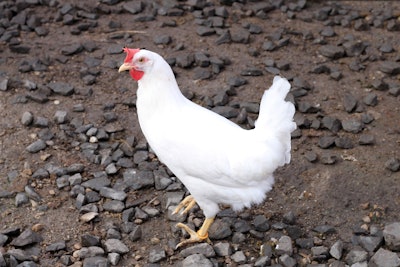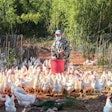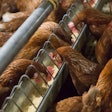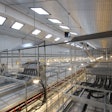
Stocking density affects the type of microbes found on layer hens raised in a free range environment, although not always in the way expected, revealed research published in the Journal of Applied Poultry Research.
“Based on a previous study, we’ve seen how Salmonella transfer is very dependent on stocking density. It’s really important to have an idea, given a certain amount of space and the birds in the area, of what’s the chance of seeing either microbes or pathogens,” explained Javier Garcia, research associate in the Egg and Poultry Production Safety Research Unit, U.S. Department of Agriculture (USDA) Agricultural Research Service (ARS).
The research team included scientists from the USDA and North Carolina State University.
Most U.S. egg layers are still housed in conventional systems, but alternative housing systems, such as free-range, have grown in popularity in recent years due to laws such as Proposition 12, pressure from animal rights groups and cage-free commitments in retail and foodservice.
Despite the perceived animal welfare benefits of these housing systems by consumers, there can pose increased food safety concerns.
Microbial differences
The study compared the microbial load of free-range Hy-line Brown layer hens housed in either low stocking density (4.02 m2/bird) or high stocking density (2.01 m2/bird) every seven to nine weeks.
The results showed a higher presence of aerobic bacteria in the birds housed at a high stocking density at week 20. The aerobic bacteria included Enterobacteriaceae, a group of bacteria that include Escherchia coli (E. coli) and Enterobacter.
However, by the end of the study period, the numbers flip flopped, with the nestbox swaps from low-density flocks displaying more aerobic bacteria than their high-density counterparts.
“In most cases, higher density equals higher microbial count. In this case, we did see those higher microbial count, but they weren’t as high as we expected. We expected it to be much, much higher than the low density and they’re very comparable, so that was very surprising,” said Garcia.
The egg samples in the high-density flocks still had a higher presence of Enterobacteriaceae.
There were no differences in the prevalence of Listeria or Salmonella.
“This is a study looking into expensive housing systems and sometimes it might not be that easy to draw a conclusion or a very easy conclusion,” Garcia said.
“There’s so many factors that go into these different housing systems as far as stranger birds, environment, the structure itself, where the birds are housed, etc. This study gave us a snapshot of a single flock.”



















